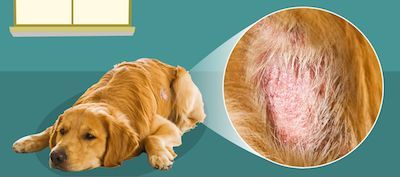
Does your dog have a food allergy? Treatment, symptoms and effects.
In order for your dog to enjoy a long, joyful and vital life, you need to provide him with stimuli, keep him up to date with vaccinations and compose a menu rich in essential macro- and microelements. When creating a menu for your pet, in addition to food based on good composition, it is also important to choose products that are not classified as “allergenic”. This inconspicuous group of products can cause undesirable symptoms, and in extreme cases – create real havoc in the body of your four-legged friend.
Food allergy in dogs
An allergy is an abnormal reaction on the part of the immune system, which has previously come into contact with an undesirable substance. If your dog has had direct contact with the ingredient, we speak of an inhalant allergy. If the substance was delivered in the form of food, we speak of food allergy.
Single or prolonged contact with an allergenic ingredient leads to inflammation, which can manifest itself in many ways. Among the most common are.:
- skin reactions – dandruff or hair loss,
- food intolerances,
- problems on the background of respiratory system,
- anxiety, agitation,
- lowered immunity,
- changes in your dog’s weight,
- frequent scratching,
- baldness.
All of these symptoms may occur in any breed and at any age. What’s more, an allergy may appear after years of previously problem-free feeding.
Allergenic products
The list of most allergenic products includes both specific ingredients and entire food groups. So if you suspect that your pooch may be suffering from an allergy, read the composition of the food he has been eating so far. The presence should be alarming:
Cereals – the most common group of allergenic ingredients that contribute to damage of the intestinal villi. Excess grain in your dog’s food can lead to constipation, colic and diarrhea. What’s more, food in which there is a predominance of cereals is full of “cloggers”, which do not provide the most important ingredients, negatively influencing e.g. the health of your dog. glycaemia.
Poultry – with particular emphasis on chicken, which is the cheapest meat available “tape”. Chickens are very often fed with grains and hormones that increase meat growth. As a result of these techniques, the food may adversely affect the dog’s digestive system. When giving up chicken, replace it with another source of protein such as. lamb.
Dyes, preservatives – which prolong the freshness of the food and affect the aesthetics of the food, while being the main fuel for. allergies and indigestion. Remember – your dog doesn’t need gorgeous looking food in his bowl.
How to diagnose and treat an allergy?
The first step towards diagnosis is of course observing our pet. Any changes in color, behavior or mood of the dog should be an alarm signal for us. A visit to the doctor is usually based on a thorough history and subsequent tests – such as. from blood or feces.
Very often, as a result of medical examinations and diagnoses, a so-called “food supplement” is recommended. elimination diet. In this long-term process (even over 24 months), hypoallergenic dog food that is free of allergenic ingredients is invaluable. What’s more – this type of food is tested in a laboratory environment, which increases its health-promoting properties.
How an allergic dog should be fed?
Firstly, avoid cheap pet foods that are largely based on cereals, bulking agents and raising agents that do not provide valuable calories. Secondly, make sure that the food you buy has in its composition of valuable protein, which should be the basis of your pet’s diet. Remember to avoid chicken and eggs, replacing them with venison or lamb. Third – in the composition should be complex carbohydrates, preferably with a low glycemic index. Vegetable carbohydrates are not only safer for the digestive system, but also for the glycemia. Fourthly, if you are not sure whether the food you have chosen is suitable, go to a doctor and ask the experts for their opinion. Do not forget to supplement your dog, so as to make up for arising deficiencies. Fifth – choose a holistic food, i.e. one that provides all the ingredients: protein, fats, carbohydrates, vitamins and minerals. Do not give up any of these ingredients, because only a balanced meal guarantees a long and healthy life of your four-legged friend. Sixthly and most importantly – in case of known allergies Use hypoallergenic pet foods that are free of allergenic ingredients. Don’t change the food or menu drastically – especially if your dog has a delicate digestive system.